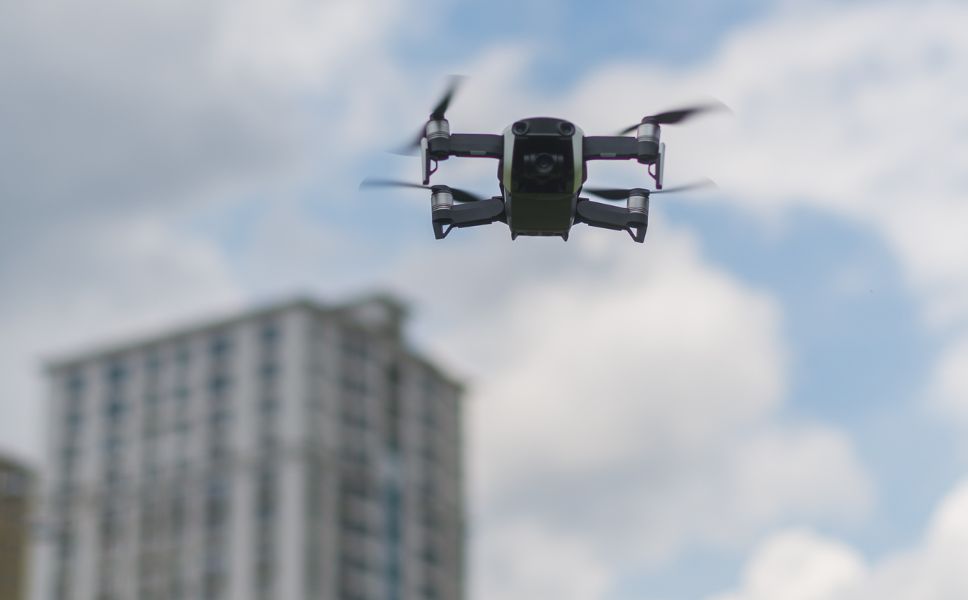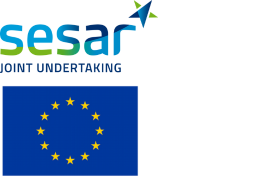- U-space Separation in Europe
- Consortium: Isdefe, Nommon, University of South-Eastern Norway, DLR, Leibniz Universitat Hannover, Polis, and Indra.
- 2021 – 2022
- usepe.eu

Context
The U-space concept was the response of the Warsaw Declaration in 2016, which sought to harness the potential of drones for creating jobs and new business opportunities. The U-space Blueprint, published by the SESAR Joint Undertaking in 2017, defines U-space as “a set of new services and specific procedures designed to support safe, efficient and secure access to airspace for large numbers of drones”. As the range of drone applications continues to expand, so does the number of drones operating simultaneously within the same geographical area. Ensuring their safe separation from each other and from manned aircraft is crucial to maximising the utilisation of airspace. This challenge becomes even more complex in urban environments, where drones must contend with buildings and unpredictable wind patterns. The SESAR project USEPE was dedicated to researching drone separation methods in such demanding urban settings.
The project
The USEPE project defined and validated a new separation method to be used in densely populated environments within the U‐space context. USEPE aimed to enhance the automatisation of the safe separation and deconfliction of drones while maintaining airspace capacity across different environments. The proposed concept provides the U-space separation management system with artificial intelligence capabilities, aligning with the European ATM Masterplan Roadmap’s vision for the safe integration of drones into all classes of airspace. In order to obtain valuable results, the project established a series of real urban scenarios, evaluating their feasibility to identify the most suitable ones for implementation. The selected scenarios underwent thorough validation using the European Operational Concept Validation Methodology (E-OCVM). The research approach took into account both the strategic and tactical flight phases.
USEPE’s goals
The primary objective of USEPE was to conceptualise, develop, and evaluate a Concept of Operations (ConOps) along with a suite of enabling technologies aimed at ensuring the safe separation of drones, both from each other and from manned aviation, particularly focusing on densely populated areas within the U-space environment. To accomplish this overarching goal, the project outlined four specific objectives:
- Determine the main separator: within both the strategic and tactical planning phases, the project sought to clarify whether the responsibility for separation should lie with the drones themselves or the U-space systems.
- Conceptualise and simulate safe separation concepts: USEPE aimed to define and simulate a range of concepts tailored to provide safe separation for various types of drones during each planning phase.
- Evaluate Impact on Key Performance Areas (KPAs): the project assessed the impact of these proposed concepts on a variety of KPAs, with a particular focus on safety, capacity, and efficiency. This evaluation aimed to yield insights and recommendations for the most suitable approach in different operational environments.
- Disseminate results and gather feedback: USEPE was committed to sharing its findings with all relevant stakeholders, facilitating an open exchange of feedback to gauge the appropriateness of transitioning to subsequent stages in the Research and Innovation (R&I) cycle.
Nommon’s role
Nommon played a pivotal role in the USEPE project, leading the development and implementation of the operational concept for the safe separation of drones in the U-space environment. The USEPE concept was integrated into a simulation tool to assess and evaluate the impact on a variety of KPAs. Additionally, Nommon actively contributed to the refinement and enhancement of the Concept of Operations (ConOps).
Nommon’s involvement extended to the exploration of machine learning algorithms aimed at optimising the overall efficiency of separation processes. Furthermore, Nommon took a prominent role in the validation phase of the separation method. In this capacity, Nommon led the execution and analysis of the last-mile delivery and emergency operation use cases.
Results
USEPE introduced the Dynamic Density Corridor Concept (D2-C2), a new separation method tailored for urban and suburban environments, offering strategic and tactical conflict resolution within Very Low-Level (VLL) airspace. This method combines the advantages provided by Density Based Airspace Management, Corridors and Geovecotring to safely separate drones. The separation method was validated through fast-time simulations encompassing three different exercises: last mile delivery, emergency operation, and urban surveillance scenarios. These were considered during the simulation campaign in nominal and contingency situations and compared to a reference scenario where the D2-C2 method was not applied. In order to validate the separation method, a set of software developments were made for the BlueSky simulator, ensuring their reusability for future research in U-space. Additionally, an unsupervised machine learning algorithm was developed to support D2-C2 implementation, aiding route planning and dynamic segmentation.
Regarding the ATM Master Plan and U-space framework, USEPE contributed to strategic and tactical conflict resolution and dynamic capacity management services, which fall under phases U2 (initial services) and U3 (advanced services) respectively.
- Strategic conflict resolution service: USEPE proposed a new separation method for strategic deconfliction. It divides airspace into segments and corridors, each with a maximum capacity based on aircraft safety volumes. New flight plans are evaluated against the expected occupancy of these segments, allowing entry if no issues are detected.
- Tactical conflict resolution service: In cases where conflicts persist despite strategic deconfliction, USEPE’s method intervenes at the tactical layer. Tactical conflict resolution service is performed by a U-space service provider, which also monitors traffic. The performance-based conflict detection method provides the optimal resolution manoeuvre to be executed in order to resolve the conflict. The operator of the drone receives the command and is responsible for performing the suggested manoeuvre in both segments and corridors.
- Dynamic capacity management service: USEPE’s separation method aligns with dynamic capacity management by enabling capacity modulation in response to demand. The final output of this service is the traffic organisation. In the scope of the D2-C2 method, this output is used by both strategic and tactical conflict resolution services.

USEPE is co-funded by the EU under the H2020 Research and Innovation Programme, through the SESAR Joint Undertaking (grant agreement No. 890378).
